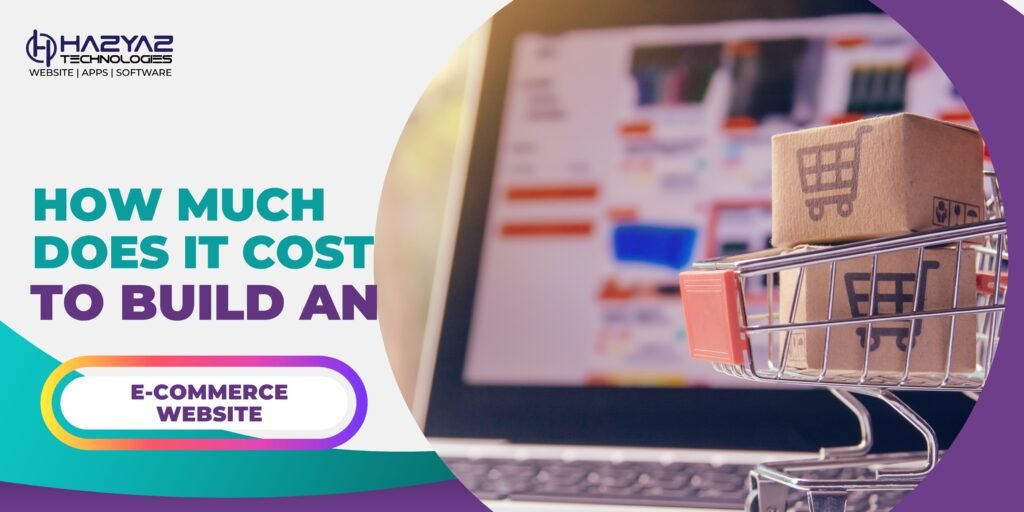Introduction
Venturing into the e-commerce realm is an exhilarating step for any entrepreneur or business. Yet, the financial aspect of setting up an online store often seems like a complex puzzle. With various elements contributing to the overall cost, from platform fees to marketing strategies, understanding where your investment goes can make all the difference. This guide serves to illuminate the path, offering a clear view of the costs involved in building an e-commerce website in 2023.
1.Understanding the Basics of E-commerce Costs
Before we dive into specifics, it’s crucial to grasp the broader picture. E-commerce website costs can range significantly based on factors like platform choice, design complexity, and marketing efforts. Budgeting for e-commerce requires a holistic approach, considering both one-time and recurring expenses to keep your digital doors open
2. Domain Name and Hosting
The first step to digital presence is securing a domain name and hosting service. Costs here can vary, with domain registration typically ranging from $10 to $50 annually, and hosting fees anywhere from $5 to hundreds per month, depending on the scalability and support you need.
3. Choosing the Right E-commerce Platform
Selecting an e-commerce platform is pivotal. Options like Shopify, WooCommerce, and Magento cater to different needs and budgets, with monthly fees ranging from free to $299 for premium plans. Platform choice affects not only initial costs but also long-term scalability and functionality.
4. Website Design and User Experience
A compelling website design and seamless user experience (UX) can significantly impact your site’s success. While pre-designed templates offer a cost-effective solution (free to $100), custom web design can escalate to $5,000 or more, depending on complexity and uniqueness.
5. Product Catalog Creation
High-quality product images and engaging descriptions are essential for captivating potential customers. Professional photography and copywriting services can add to the cost, ranging from a few hundred to several thousand dollars, based on the catalog size.
6. Payment Gateway Integration
Integrating reliable payment gateways is non-negotiable for processing transactions securely. These services typically charge a per-transaction fee, usually around 2.9% + 30¢ for each sale, alongside any monthly service fees.
7. Security Measures
Investing in security measures like SSL certificates (around $70 to $300 annually) and cybersecurity protocols is essential to protect your customers’ information and build trust in your brand.
8. Marketing and SEO
A robust marketing strategy, including SEO, social media, and email marketing, is crucial for driving traffic and sales. While initial SEO efforts might cost between $500 and $2,000 per month, effective marketing budgets vary widely based on strategy and scale.
9. Maintenance and Support
Website maintenance and technical support ensure your site remains up-to-date and functional, with costs typically ranging from $50 to $100 per hour for professional services
10. Additional Features and Integrations
Custom features and third-party integrations, such as plugins or API connections, can enhance your store’s functionality but also add to the cost, ranging from free to several hundred dollars.
11. Scaling Your Business
Planning for growth involves potential additional costs, from upgrading hosting and infrastructure to expanding your marketing efforts. Scalability costs depend on your specific growth strategies and operational needs.
FAQs:
Q: Can I build an e-commerce website on a tight budget?
Absolutely. By prioritizing essential features and leveraging cost-effective platforms and tools, launching an e-commerce site on a budget is feasible.
Q: How much should I allocate for ongoing expenses?
Ongoing costs for hosting, platform fees, maintenance, and marketing should be factored into your monthly budget, typically a few hundred to several thousand dollars, based on the size and scope of your operations.
Conclusion:
Building an e-commerce website is an investment in your brand’s future. While the upfront costs can be significant, understanding and strategically planning for these expenses can pave the way for a successful online presence. Remember, every dollar spent on creating a user-friendly, secure, and scalable e-commerce platform is an investment in attracting and retaining satisfied customers. As you embark on this digital venture, let this guide serve as your roadmap to budgeting effectively and setting your e-commerce site up for success



